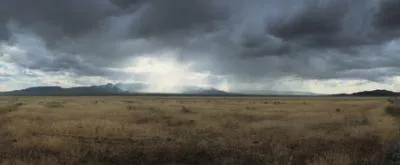
Untitled work by Terry Toedtemeier
Toedtemeier's lens
The late curator and photographer Terry Toedtemeier is widely remembered for his impish charm and off-the-wall humor. With few exceptions, however, his silver gelatin landscapes of the Pacific Northwest are resolutely "on-the-wall" artworks -- aesthetically restrained and dry to the touch.
Given Toedtemeier's twin passions for geology and 19th-century American photography, a degree of formal stuffiness comes as little surprise. "Trees," the first exhibition of Toedtemeier's superbly crafted landscapes since his untimely death last year, demonstrates how the artist worked within the same tempered, studious style for over 25 years.
Toedtemeier is best known for his studies of sea caves, lava flows and basalt outcroppings, but in "Trees," longtime friend and gallerist Jane Beebe culls more than two-dozen photographs from Toedtemeier's oeuvre that take the warmer, more sympathetic, arboreal subjects into consideration.
Robert Adams, to whom Toedtemeier is often facilely compared, once said he photographed trees because he saw them as "the more responsible, more beautiful, more giving versions of ourselves." Toedtemeier's gaze is more analytical than sentimental, though, and in his photographs, trees appear as dense blankets of trunks and needles, jagged calligraphic marks on the earth, thrusting Modernist forces before his camera, and reference points from photo-history landscapes.
Toedtemeier's stately, unflinching view of the natural world demands that viewers set aside their presumptions about landscape photography and see the world through a new lens, one tuned to the barely perceptible rhythms of geological time.
8/14/09 page 31 A&E